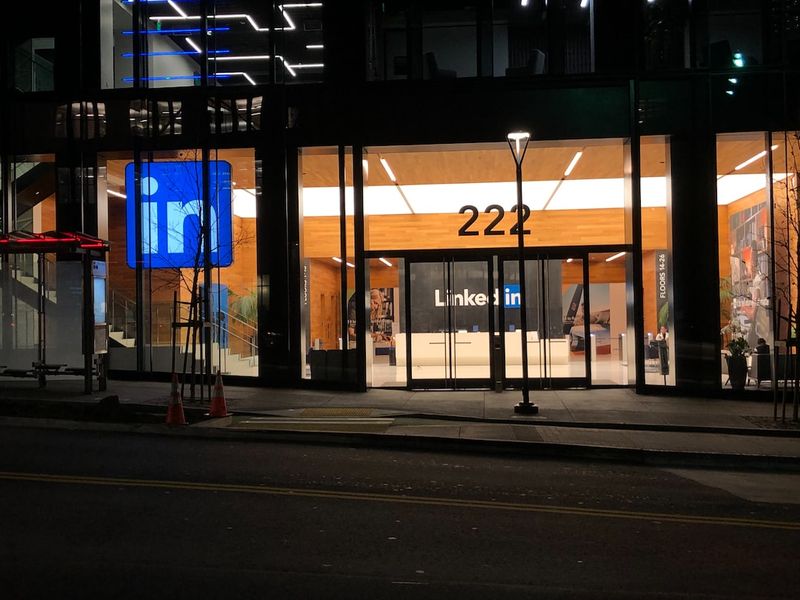Move Over, Twitter, er, X. LinkedIn Is the Cool Place to Be
The Rise of LinkedIn as a Social Platform
In recent years, LinkedIn has undergone a transformation, breaking free from its traditional image as a purely professional networking site. It has become a space where regular people can share about their lives, opinions, and personal experiences. The question on many people’s minds is whether LinkedIn can sustain this increase in popularity and if it can truly be considered “cool” now.
Sarah Frier, tech editor at Bloomberg Businessweek, provided valuable insights into this phenomenon during an interview for the podcast What Next: TBD. Frier explains that her motivation for exploring the evolution of LinkedIn came from her own struggles in finding an online platform to engage with professionally. She noticed the emergence of alternatives to Twitter but realized that building a network from scratch was a daunting task. This led her to explore LinkedIn as a potential outlet.
LinkedIn was historically viewed as a platform where posts would simply disappear into a black hole. However, Frier discovered that when she started posting on LinkedIn, she received real conversations and engagement. This made her question if people were actually spending their time scrolling on LinkedIn. Her curiosity was further piqued when she encountered a college student who believed it was more acceptable and meaningful to post on LinkedIn than on the platforms she herself thought should be prioritized.
A Shift in Content and Identity
What sets LinkedIn apart is the kind of content that users are sharing. Frier describes it as “thinkfluencing,” where individuals post what’s on their minds and tie it back to their work. She provides an example of someone sharing their personal experience of unemployment, expressing the emotional toll it took on them and their family. This level of personal sharing is reminiscent of older Facebook posts.
The shift in content reflects the changing attitudes and behaviors of younger generations. Unlike previous generations who were more likely to have long-term careers with a single employer, millennials and Gen Z professionals are more apt to change jobs frequently, explore different industries, and develop diverse skill sets. With this shifting landscape, individuals are recognizing the importance of building an identity outside of their employer. LinkedIn offers them an opportunity to showcase their professional identity in a way that aligns with the targeted purpose of the platform.
The Emergence of LinkedIn Influencers
Frier’s interview also delves into the concept of LinkedIn influencers. While it may come as a surprise to many, the idea of LinkedIn influencers has been encouraged and supported by the platform itself. LinkedIn recognized the importance of having high-profile individuals using their platform and promoting their content. Over time, grassroots influencers began to emerge as people aspired to gain success and recognition on the platform.
LinkedIn‘s growth as a social network has been further fueled by the addition of podcasts, newsletters, and audio features. Despite initial skepticism when LinkedIn introduced features like LinkedIn Stories, there are now professionals who devote their efforts to the platform, building consulting, mentoring, and advisory businesses as a result.
An Analysis of LinkedIn‘s Success and Differentiation
The Stable Structure of LinkedIn
What sets LinkedIn apart from other social networks is its stability and focus on a different revenue model. While platforms like Meta, Twitter, Snapchat, and Pinterest heavily rely on advertising revenue and capturing attention, LinkedIn‘s primary business lies in recruiting and connecting people to job opportunities. They also offer premium packages and tools for sales professionals. This diversification in revenue streams has provided LinkedIn with a level of stability that sets it apart from other social networks.
The Impact of the Pandemic
The COVID-19 pandemic has played a significant role in the growth and evolution of LinkedIn. As people began merging their personal and professional lives during lockdowns and remote work, they started sharing more personal content on LinkedIn. This created new habits and expanded the perception of LinkedIn as not just a digital résumé but also a social networking tool.
Additionally, the pandemic led to layoffs in prominent tech companies, causing individuals to experience professional angst and seek ways to express their thoughts and emotions. LinkedIn became a platform for sharing experiences, receiving support, and connecting with professionals facing similar challenges.
The Future of LinkedIn‘s Growth
The question remains whether LinkedIn can sustain its current growth and popularity. Frier suggests that LinkedIn needs to capitalize on this momentum while making it worthwhile for users. This could involve exploring ways for users to monetize their presence on the platform, building on the concept of influencers and offering opportunities for financial gain. Failure to provide incentives for users to continue engaging on LinkedIn could result in stagnation or users migrating to other platforms.
Implications and Recommendations
The Importance of LinkedIn
LinkedIn has become essential for individuals seeking to enhance their professional brand and connect with a wider network of professionals. As Frier’s interview suggests, posting on LinkedIn provides a better chance of reaching a larger audience compared to other platforms. Having a strong, well-curated LinkedIn profile has become crucial for job seekers, employers, and those looking to establish their professional presence.
The Evolution of LinkedIn
LinkedIn‘s transformation from a purely professional networking site to a platform where personal experiences and opinions are shared presents both opportunities and challenges. LinkedIn must strike the delicate balance of maintaining its utility as a professional networking tool while encouraging users to engage with and enjoy the content in a new way.
Encouraging Engagement and Monetization
To sustain its growth, LinkedIn needs to offer incentives and tools for users to monetize their presence on the platform. This could involve creating opportunities for consulting, mentoring, or advisory businesses, as well as further developing ad-sharing programs. By empowering users to derive financial benefits from their engagement, LinkedIn can foster long-term loyalty and encourage continued growth.
Platform Differentiation and Value
LinkedIn‘s success lies in its ability to differentiate itself from other social networks. By focusing on its core strengths—recruiting, job connections, and professional branding—LinkedIn has established itself as a stable and essential platform. However, to maintain its competitive edge, LinkedIn must continue to innovate and stay responsive to evolving user needs and preferences.
Overall, LinkedIn‘s emergence as a “cool” platform reflects the shifting dynamics of professional networking and identity-building. As users increasingly seek to showcase their personal and professional lives in one space, LinkedIn has positioned itself as a versatile and influential platform for individuals to engage, network, and thrive in their careers.

<< photo by Gabriel Varaljay >>
The image is for illustrative purposes only and does not depict the actual situation.




